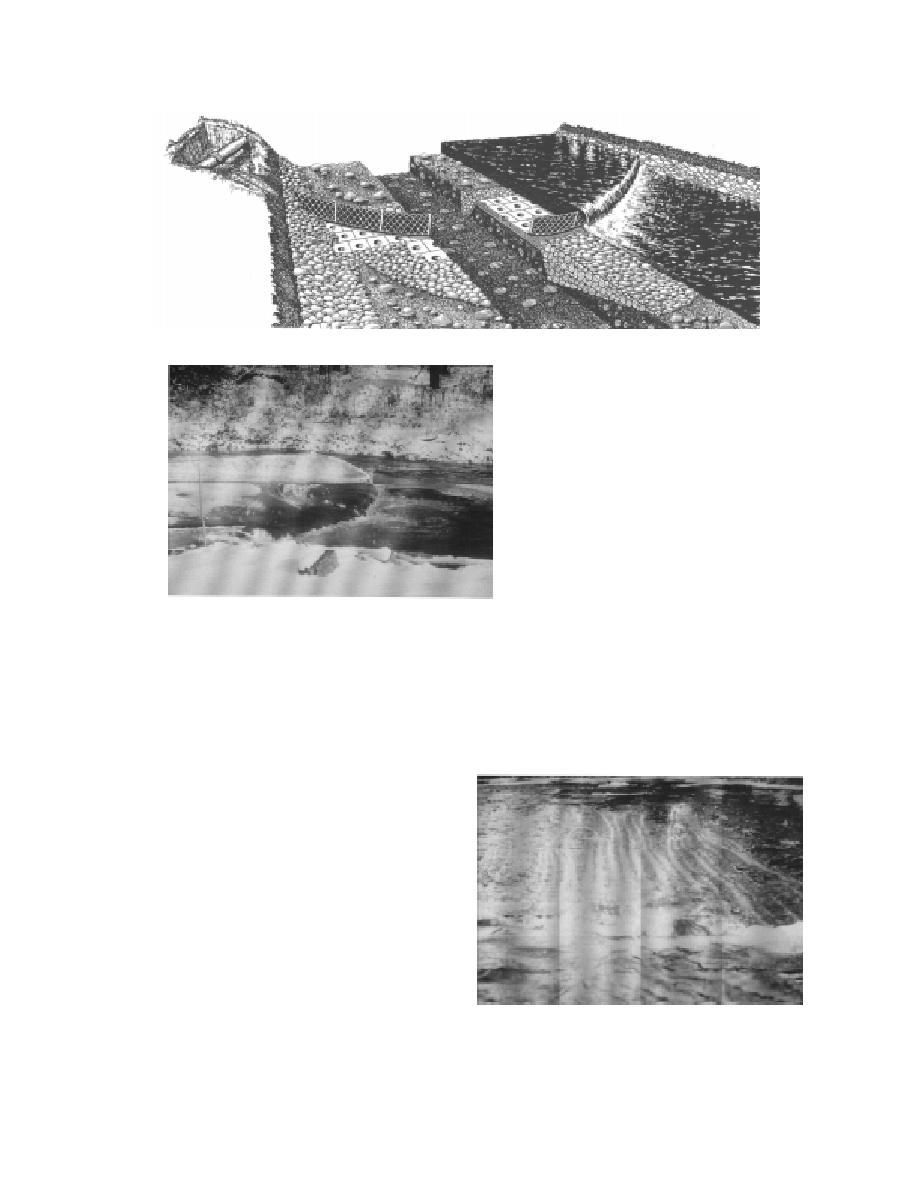
a. Schematic showing the wier, anchors and bed protectors.
b. Ice cover formed behind the wier
Figure 15. Tension weir on the Ompompanoosuc River at Union Village, Vermont.
ling of the lines in turbulent water was a prob-
neers at Iwate University and the Hokkaido Elec-
lem, however. In addition, should the lines be
tric Power Co.
carried away at breakup, they might present a
The winters of 1993 and 1994 saw successful
nuisance or hazard at downstream locations.
field demonstrations of an impermeable tension
Sahlberg (1990) described a similar method--ice
weir at a site on the Ompompanoosuc River in
nets--to capture frazil and cause an ice cover to
Union Village, Vermont. The 60-ft-wide struc-
ture, consisting of vertical steel posts, a wire
rope mesh and a rubber-like fabric, created a 3-
ft-deep pool, initiating the formation of a
smooth sheet ice cover (Fig. 15). Concrete and
riprap bed protection prevented all but minor
scour. The Union Village structure fulfilled its
design objectives of low cost, easy installation
and applicability to small, unnavigable rivers.
The issue of scaling removable weir technology
up to larger rivers is worth examining, since
these structures do not interfere with open water
season uses of the river such as navigation and
recreation.
Frazil collector lines and ice nets
Figure 16. Frazil collector lines being tested on the
Tests of ice cover formation using arrays of
Mascoma River, 1981. The view is looking upstream.
ropes, or frazil collector lines, by Perham (1981,
Frazil accumulates on the individual lines, which are
1983) were relatively successful (Fig. 16). Tang-
floating near the surface.
13



 Previous Page
Previous Page
